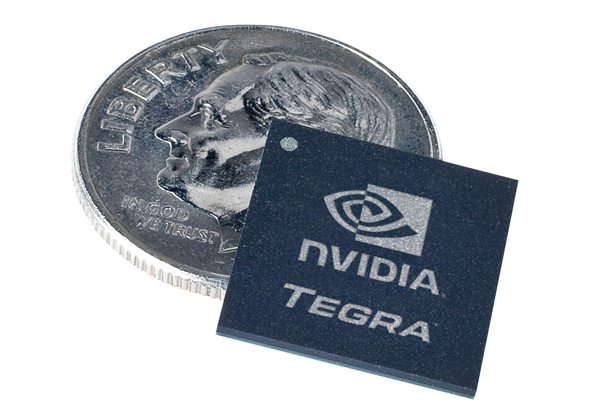nVidia talks up power efficiency on their Quad Core Kal-El Tegra processor
Written by Sean KalinichReading time is around minutes.
 About three or four years ago nVidia CEO Jen-Hsun Huang made the bold announcement that he wanted nVidia’s ARM based SoC (System on Chip) named Tegra to become 50% of nVidia’s revenue. One of the products that has had at least good success has been Microsoft’s ZuneHD. We were given the chance to play around with one of these and found it to be a great product. Unfortunately between the launch of the Tegra and the Tegra 2 was a serious delay. This had something of a negative impact on the market acceptance for this processor. When you combined these delays with the issues (and rumors) around the Fermi GPUs things did not look good for nVidia’s dream.
About three or four years ago nVidia CEO Jen-Hsun Huang made the bold announcement that he wanted nVidia’s ARM based SoC (System on Chip) named Tegra to become 50% of nVidia’s revenue. One of the products that has had at least good success has been Microsoft’s ZuneHD. We were given the chance to play around with one of these and found it to be a great product. Unfortunately between the launch of the Tegra and the Tegra 2 was a serious delay. This had something of a negative impact on the market acceptance for this processor. When you combined these delays with the issues (and rumors) around the Fermi GPUs things did not look good for nVidia’s dream.
However, since that time they have managed to turn much of that around and pulled off some great design wins. We have found nVidia’s dual core Tegra 2 in devices such as Asus’ Transformer and the Samsung Galaxy Tab 10.1. Both of these devices have grabbed the market’s interest and have begun to nibble away at the strangle hold that Apple has on the tablet market (and prompted a number of lawsuits from Apple).
Now with the Tegra 2 still tumbling out into the market nVidia is talking Kal-El a quad core Tegra that is reportedly faster and more power efficient than the Tegra 2. Now, having a power efficient quad core ARM based SoC is a very cool feat, but if nVidia is to be believed then the Kal-El Tegra will use less power than the current dual core Tegra 2. For those that will sat that the Android based Tablet and phone is in serious trouble due to Apple’s recent lawsuits and patent complaints do not worry. According to Huang, nVidia is still investing heavily in Android and also looking forward to Microsoft’s Windows 8. Windows 8 will be the first Windows operating system for ARM based SoCs.
We have some questions into nVidia to see just what they see as the future for Terga and the whole world of the Tegra and Smart device. We hope to hear back from them soon on this, but for now… it will be interesting to watch and see if nVidia can get Kal-El out of the gate soon and not repeat the same mistakes that plagued Tegra 2.
Discuss this in our Forum
Latest from Sean Kalinich
- ConnectWise Slash and Grab Flaw Once Again Shows the Value of Input Validation We talk to Huntress About its Impact
- Social Manipulation as a Service – When the Bots on Twitter get their Check marks
- To Release or not to Release a PoC or OST That is the Question
- There was an Important Lesson Learned in the LockBit Takedown and it was Not About Threat Groups
- NetSPI’s Offensive Security Offering Leverages Subject Matter Experts to Enhance Pen Testing
Leave a comment
Make sure you enter all the required information, indicated by an asterisk (*). HTML code is not allowed.
